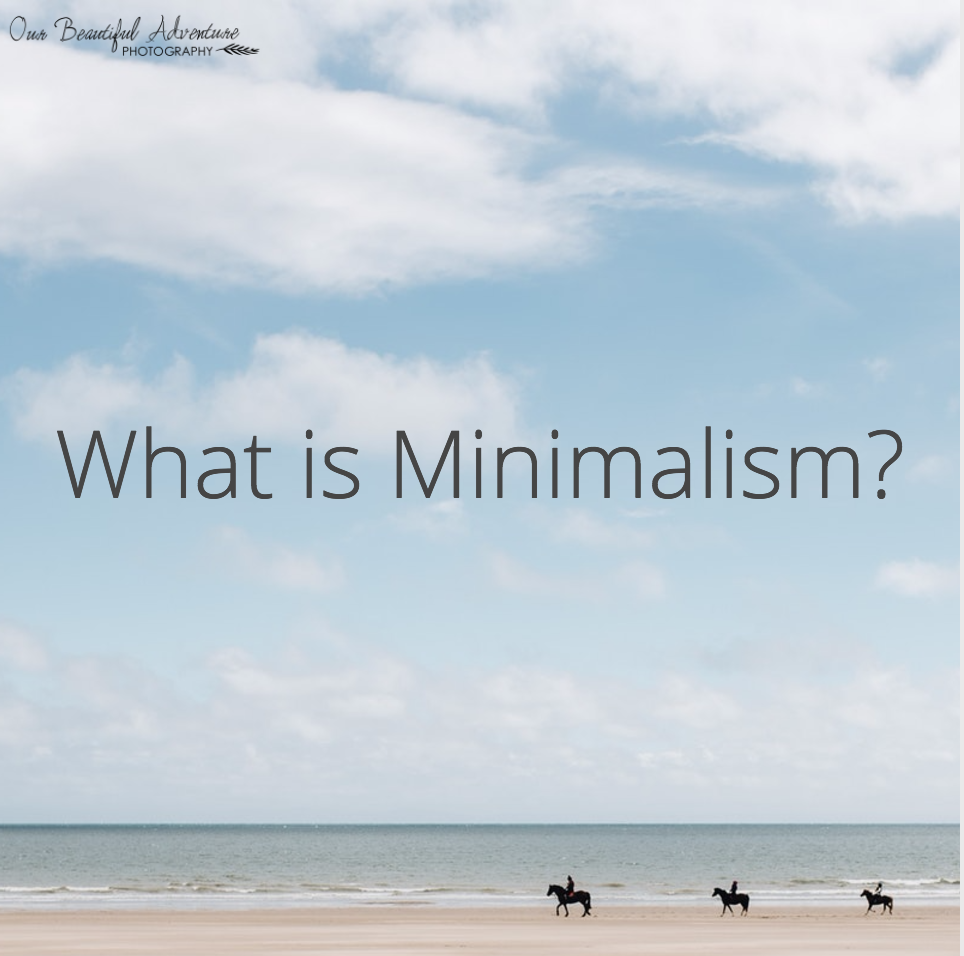The Art of Minimalism: Developing a Balanced and Peaceful Living Setting
The Art of Minimalism: Developing a Balanced and Peaceful Living Setting
Blog Article
Comprehending Minimalism: Techniques for Decreasing Clutter and Enhancing Clearness in Everyday Living
Minimalism is progressively acknowledged as a sensible method to boosting quality and emphasis in today's messy globe. By systematically examining our ownerships and prioritizing intentionality, we can create rooms that not only show our values but likewise promote mental well-being. Employing techniques such as the "Four-Box" method can assist in a more well organized atmosphere, yet real difficulty hinges on growing a minimalist state of mind that maintains these initiatives. Discovering the nuances of this viewpoint might reveal shocking insights into exactly how you can change your every day life. What might you find when you welcome this deliberate simpleness?
Defining Minimalism and Its Benefits
Specifying minimalism includes understanding it as a way of life option that emphasizes simpleness and intentionality in both daily routines and physical possessions. At its core, minimalism urges people to prioritize what truly matters, permitting a more significant and concentrated presence. By removing away the non-essential, minimalism welcomes individuals to involve deeply with their surroundings and experiences.
It promotes mental quality, as lowering mess in one's environment can lead to reduced diversions and stress. Minimalism advertises financial flexibility; by focusing on needs over desires, people can make even more educated purchasing choices, leading to possible financial savings and reduced financial obligation.
Ultimately, minimalism is not just about worldly reduction yet entails an all natural change in point of view, promoting a life defined by fulfillment, balance, and function. Embracing this way of living can lead to profound adjustments in just how individuals connect and view with the globe around them.
Analyzing Your Present Clutter
Clutter often manifests as a frustrating buildup of items that no longer serve a purpose, developing an obstacle to attaining a minimal way of living. Take note of particular classifications of items, such as apparel, books, or kitchenware, as this will help you comprehend the extent of the mess.

In addition, take into consideration the frequency of use for each product. Inevitably, understanding your existing mess is an essential step towards welcoming minimalism and enhancing clarity in your everyday living.

Practical Decluttering Methods
Having actually examined your existing mess, the following action is to execute useful decluttering techniques that facilitate a more arranged living area. Minimalism. One effective technique is the "Four-Box" method, where you mark 4 boxes classified: maintain, contribute, garbage, and relocate. This technique urges fast decision-making and makes certain items are categorized suitably
An additional approach is the "One in, One out" rule, which states that for each brand-new thing acquired, an existing item must be gotten rid of. This concept assists keep equilibrium and prevents accumulation in time. Furthermore, think about the "30-Day Minimalism Game," where you eliminate one item on the first day, 2 on the second, etc, cumulatively cultivating a sense of success.
For those that have a hard time with psychological attachments to properties, the "Nostalgic Value" technique can be valuable. Restriction yourself to a particular number of treasured products, allowing you to appreciate their relevance without overwhelming your room. Establish a normal decluttering routine, whether regular monthly or seasonally, to preserve a clutter-free environment. By employing these methods, you can produce a much more reliable and peaceful home, ultimately improving clarity in your day-to-day life.
Producing Deliberate Areas
Developing intentional rooms involves a thoughtful strategy to just how we layout and arrange our atmospheres, guaranteeing each area serves a certain function and reflects our worths. This practice is essential in cultivating a sense of clarity and function in our day-to-days live. By seriously analyzing the function of each space, official site we can eliminate distractions and enhance our general well-being.
To produce willful rooms, begin by recognizing the key activities that will certainly happen in each area. For instance, a home workplace need to be developed to foster efficiency, incorporating aspects such as appropriate lights, comfortable furniture, and very little interruptions. In comparison, a leisure area must advertise serenity, featuring relaxing colors and comfy seats.
Furthermore, consider the psychological effect of your surroundings (Minimalism). Integrating individual products that click this link resonate with your values, such as artwork or plants, can boost the connection to your area. Routinely evaluate these atmospheres to ensure they continue to offer their designated function as your requirements advance
Ultimately, developing willful spaces is concerning making aware selections that straighten with your way of living, promoting harmony and effectiveness in your living and working settings.
Keeping a Minimalist Frame Of Mind
Embracing a minimalist mindset calls for ongoing reflection and intentionality in our thoughts and actions. Establish apart time to assess your commitments, properties, and even digital web content, ensuring they align with your core concepts.
Another trick strategy is to exercise appreciation. Recognizing what you already possess fosters contentment and lowers the wish for unwanted. This shift in viewpoint encourages admiration for simpleness, enhancing total wellness. Integrating mindfulness techniques, such as meditation or journaling, can better strengthen a minimalist attitude by advertising clearness and lowering psychological mess.
Additionally, establish limits to protect your time and power. Discover to say no to non-essential commitments and interruptions that do not add to your personal growth. Surround on your own with like-minded individuals that support your minimalist journey, as shared worths can boost inspiration and accountability.
Final Thought
To conclude, embracing minimalism provides considerable benefits, including lowered mess and improved clarity in life (Minimalism). By methodically examining ownerships and applying useful decluttering methods, individuals can create deliberate rooms that foster mindfulness and thankfulness. Preserving a minimal mindset calls for recurring analysis and dedication to simpleness, inevitably leading to a more concentrated and meeting way of life. The principles of minimalism serve as important tools for growing an environment that sustains personal development and health.

In addition, think about the "30-Day Minimalism Video Game," where you eliminate one product on the very first day, 2 on the 2nd, and so forth, cumulatively fostering a sense of success.
In final thought, embracing minimalism provides considerable advantages, including reduced mess and boosted clearness in daily life.
Report this page